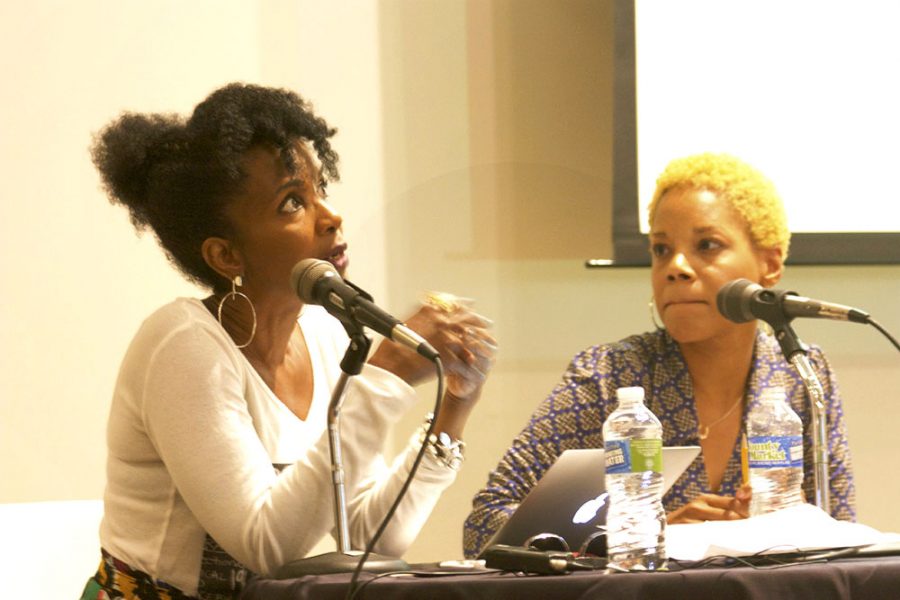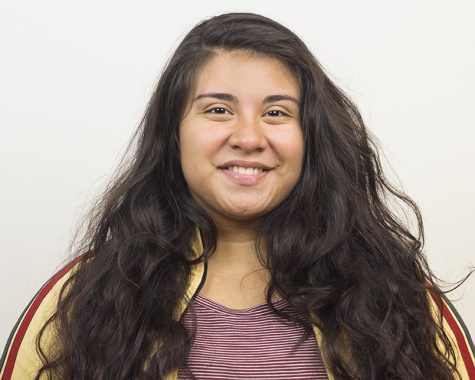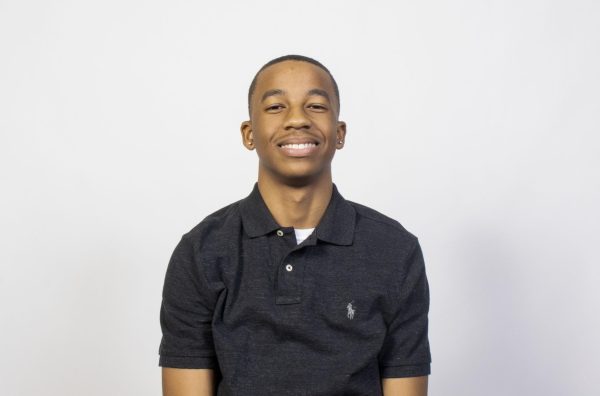Sheila Pree Bright leads discussion at Tarble
Angelica Cataldo | The Daily Eas
Fine arts photographer Sheila Pree Bright (right) and Director and Chief Curator of the Tarble Arts Center Rehema Barber (left) led a conversation about Bright’s work and her experiences in her field. Lectures at Tarble are not usually conducted through conversation, but both Bright and Barber felt it would be the best way to present Bright’s work.
September 7, 2016
The Tarble Arts Center hosted a conversation led by fine arts photographer Sheila Pree Bright and Director and Chief Curator Rehema Barber Wednesday. Bright’s work is currently displayed in the Tarble Arts Center in the exhibit about racial tension in America titled “A Dark Matter.”
“(Rehema) knows me very well, she knows my work very well, and we thought it would be better for me to be in conversation with each other, and maybe she could pull some things out of me that I didn’t think to say,” Bright said.
Rather than having a formal lecture about Bright’s work and experiences, Barber had prepared questions for Bright to answer in the form of an informal conversation. Barber then opened up the last few minutes of the conversation for the audience to ask Bright questions.
“I like this sort of idea of a dialogue,” Barber said. “The whole purpose of ‘A Dark Matter’ is about dialogue.”
Bright described her time as an undergraduate student at the University of Missouri and as a graduate student at Georgia State University. Her interest in photography grew after taking a photography class in her senior year of college.
Based out of Atlanta, but originally born in Waycross, Ga., Bright moved around the U.S. often and also lived in Germany for part of her life. Bright also described her experiences as a young child in Germany and the cultural and racial differences she faced there.
“(In Germany) people would always want to touch our skin or our hair,” Bright said. “It was very different.”
Her personal experiences with racism helped her develop her focus for her art. Bright’s work mainly revolves around her take on the racial struggles African-Americans face.
These struggles range from body images, misrepresentation in the media and the Civil Rights movement from the 1960s to the present.
One of her more recent projects, “1960Now” compares the youth of the 1960s Civil Rights movement to the young protestors of the present. It followed another project titled “1960Who” that focused mainly on the past faces and voices of the movement during the 1960s. She also had a project titled “Young Americans” that portray the young and diverse generations of America through posed portraits with the American flag.
Back in 2006, Barber met Bright at an art conference in Atlanta, and that is where Barber found the proper funding and support for Bright’s “Young Americans” project. Barber and Bright have kept in touch since and are now working together for “A Dark Matter.”
These projects aim to capture the unseen atmosphere of movements like Black Lives Matter. Bright talked about her travels to the cities affected by the protests and her interactions with the people who were involved.
“I go to a lot of universities and speak and I don’t see a lot of the young people, and I know how the young people feel that are on the ground and part of the movement, but the young people that are not, I really want to know how they feel,” Bright said.
During the lecture, Bright detailed her experiences at the protests and the emotions she felt around her. She said that what the media portrays at these protests is not the whole truth. She also said that all the young people around her were the ones keeping the movement going. She encourages students to actively seek out the truth.
“Generation Y is one of the most diverse generations in history. I’m not saying you have to be part of (the protests), but just find out what’s going on,” Bright said. “Don’t just take my word on it, go out and find out for yourself. “
Freshman psychology major Diana Rogel attended the lecture. She is originally from the Chicago area and has taken part in Black Lives Matter protests herself.
“I agree with (Bright),” Rogel said. “Black Lives Matter is really important. I know that all lives matter, but we have to think about who is being targeted and who is being affected.”
JaMonay Wise, freshman Africana studies major and criminology minor, was also among the group students that attended.
“It was really eye-opening,” Wise said. “Our generation needs to get more involved and not just push these things aside.”
Bright ended her discussion on her belief that people must get out of their comfort zone and see what these movements are like in person.
“Everybody is going to have to let their guard down and not get emotional and say ‘hey how are we going to talk about race,’” Bright said. “I think (this generations is) the one that (is) going to change things.”
Angelica Cataldo can be reached at 581-2812 or [email protected]




















































